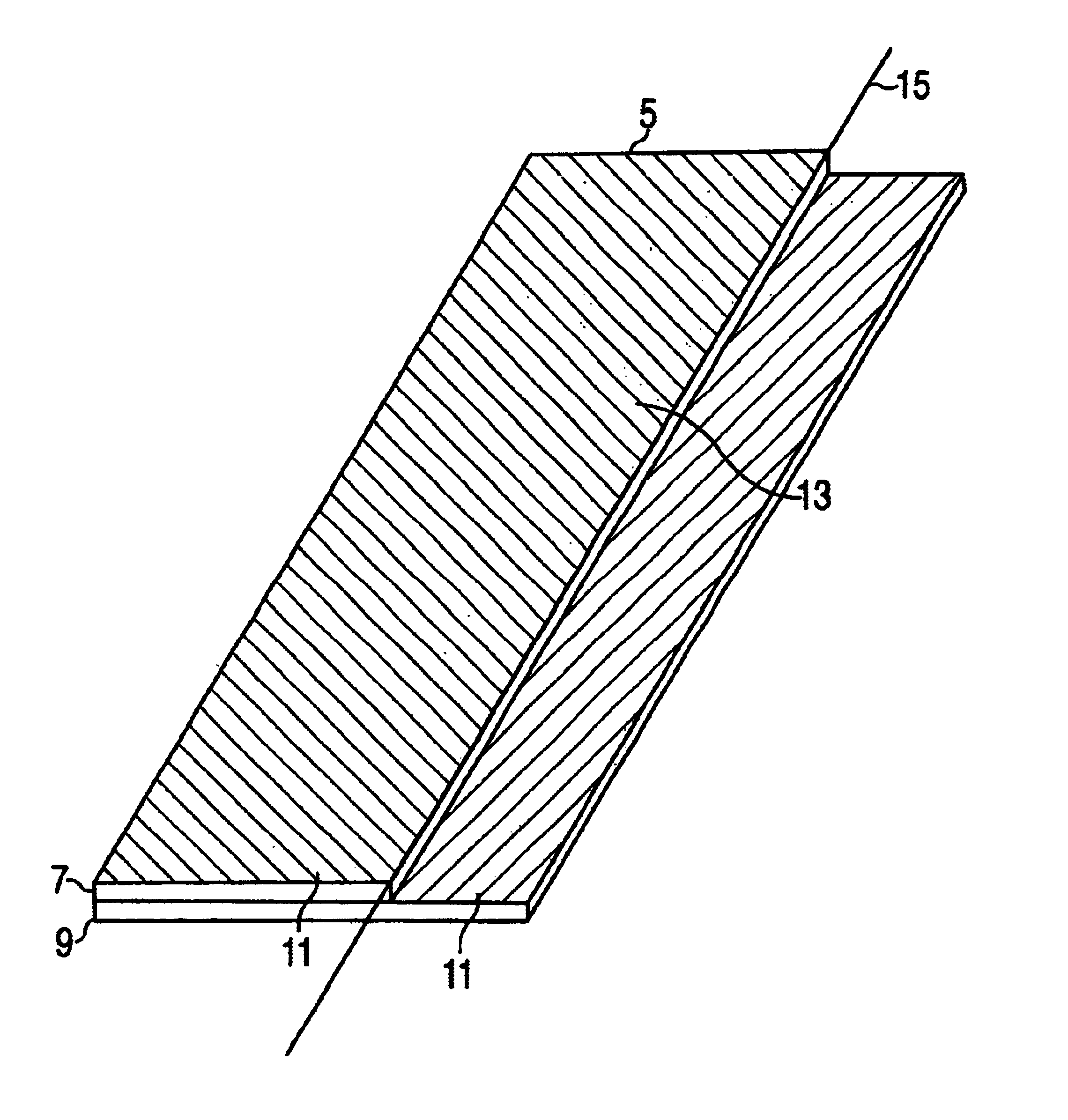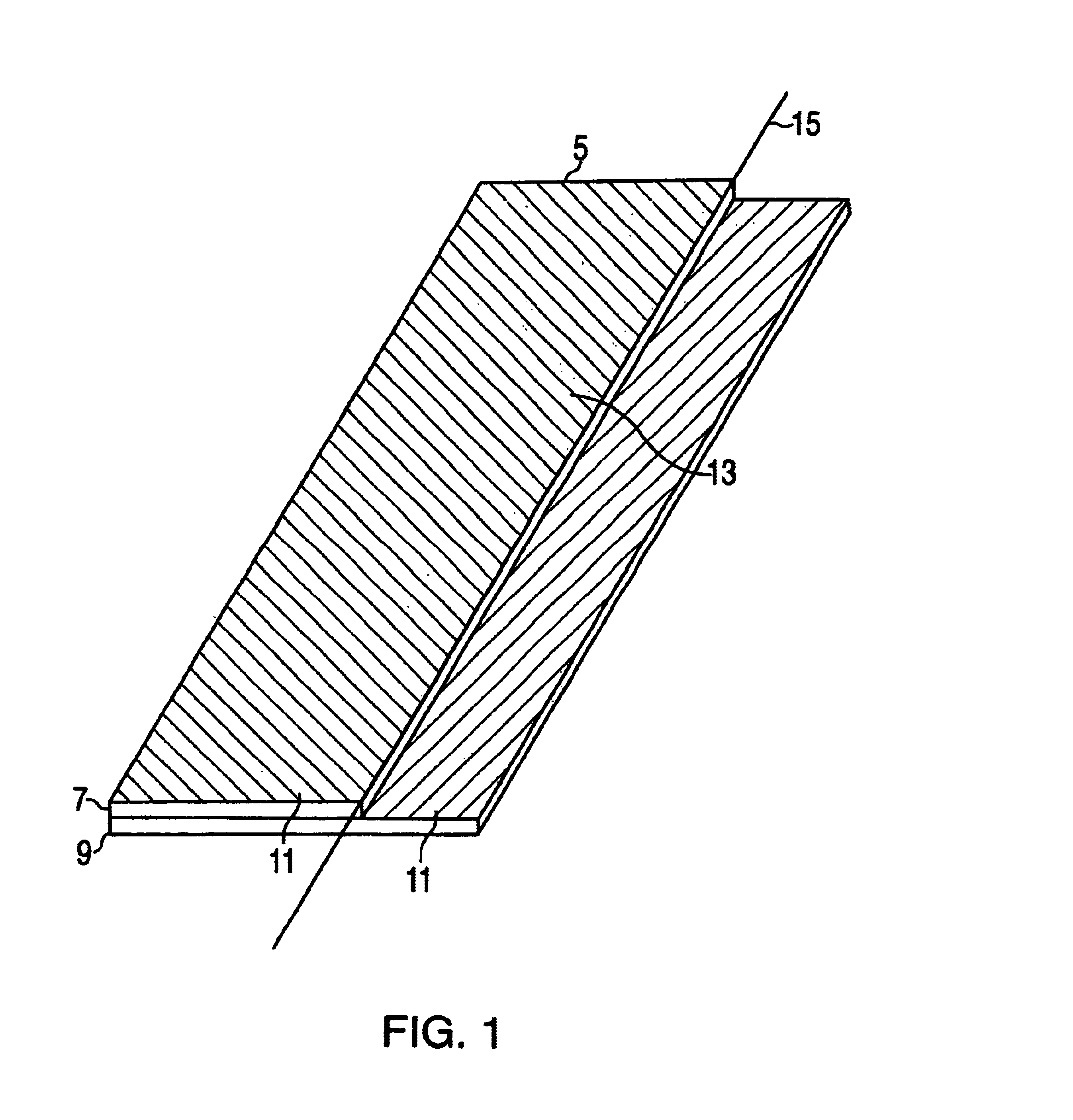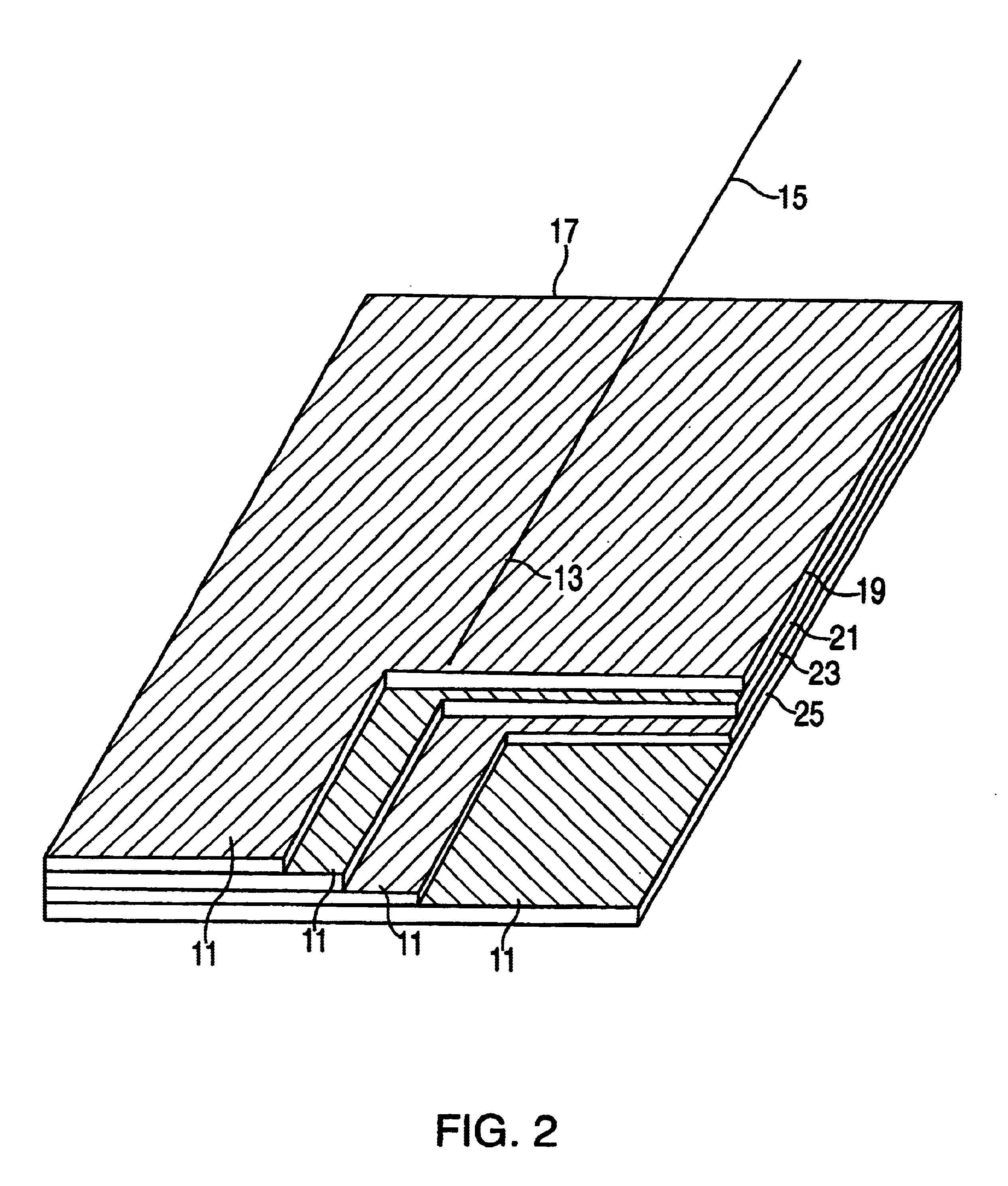Composite comprising organic fibers having a low twist multiplier and improved compressive modulus
- Summary
- Abstract
- Description
- Claims
- Application Information
AI Technical Summary
Benefits of technology
Problems solved by technology
Method used
Image
Examples
first embodiment
In this invention, two ply belts are constructed using unidirectional fiber-and-rubber composite sheets in which the PEN fiber cord fulfills the previously described parameters. The composite sheets are made using the existing processing method such as conventional tire cord calendering, filament winding, unidirectional composite prepregging, pultrusion, etc. The unidirectional sheet is then bias cut at specific ply angles and two such sheets are laminated to make the two-dimensional laminate of the ±angle ply structure. For the lab-scale samples used herein, this uncured laminate composite is subjected to suitable pressure so that the two plies are consolidated into an integrated multi-ply composite. The final step involves curing the composite by the conventional method of heating to an appropriate, elevated temperature while under pressure for a time long enough to vulcanize (cure) the rubber matrix. Note that in typical tire manufacturing methods, this curing step actually occur...
second embodiment
In this invention, fabrication of the three- and four-ply composites with combinations of different ply angles starts with the same series of steps as does the two-ply composite. The unidirectional fiber-and-rubber composite sheet is made using the existing processing method such as conventional tire cord calendering, filament winding, unidirectional composite prepregging, pultrusion, etc. The unidirectional composite sheet is then bias cut at specific ply angles and the cut sheets are laminated to make the two-dimensional laminate of the ±angle ply structure. FIGS. 2 and 3 illustrate, respectively, a four ply and a three ply version of this embodiment of the invention.
In FIG. 2, the composite 17 is comprised of four plies 19, 21, 23, and 25. The two outside plies 19 and 25 sandwich the two inside plies 21 and 23. For use in a tire, one of the outside plies 19 or 25 would be the radially-innermost ply with respect to the axis of the tire rotation, and the other outside ply would be ...
examples
Comparative Cords A, B, C, D, E, F and G, and Starting Pen Cords 1-6 (for Inventive Examples)
A series of cords was made which varied in polymer composition and cord construction. The intent of the series was to demonstrate the relationship between twist multiplier and cord properties for each polymer type. Comparative Cords A, B and C were made from commercially-available aramid yarn. Comparative Cords D, E and F were made from commercially-available PET yarn. The PEN yarn of Starting PEN Cords 1-6 was made using AlliedSignal's commercially-available PENTEX™ yarn. The initial tensile modulus and initial compressive modulus were measured on each of these cords. These data is presented in Table I, as is the stress at 1% strain.
TABLE ICordconstructionInitial tensileComparativeStarting(yarn denier / #TwistTwistmodulusStress at 1%Initial compressiveCordPEN CordPolymerof yarns used)(tpi × tpi)multiplier(g / den)strain (g / den)modulus (g / den)AAramid1500 / 20 × 004664 4.5BAramid1500 / 23 × 31644414 ...
PUM
| Property | Measurement | Unit |
|---|---|---|
| Length | aaaaa | aaaaa |
| Length | aaaaa | aaaaa |
| Length | aaaaa | aaaaa |
Abstract
Description
Claims
Application Information
 Login to View More
Login to View More - R&D
- Intellectual Property
- Life Sciences
- Materials
- Tech Scout
- Unparalleled Data Quality
- Higher Quality Content
- 60% Fewer Hallucinations
Browse by: Latest US Patents, China's latest patents, Technical Efficacy Thesaurus, Application Domain, Technology Topic, Popular Technical Reports.
© 2025 PatSnap. All rights reserved.Legal|Privacy policy|Modern Slavery Act Transparency Statement|Sitemap|About US| Contact US: help@patsnap.com



